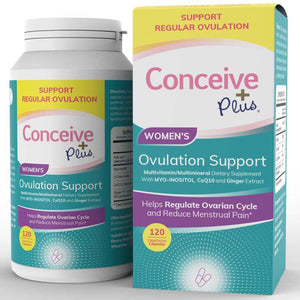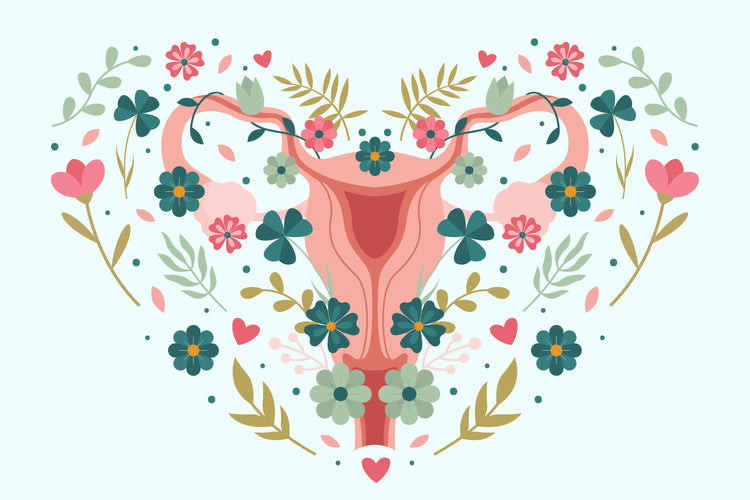How to find out if I have PCOD?


Related products
What’s covered?
A guide to the diagnosis of polycystic ovarian disease
What is PCOD?
Polycystic ovarian disease (PCOD) is a hormonal problem that adult women experience. The most susceptible age is 15-44 years. It is closely related to polycystic ovary syndrome (PCOS), a metabolic disorder and a more complex form of PCOD. In this condition, fluid-filled vesicles (cysts) are formed in the ovary.
You can see our at-home PCOS test here.
These cysts can be of two types:
Follicular cysts
Follicular cysts occur when the follicle can't rupture due to hormonal disturbances. Your eggs develop inside the fluid-filled vesicles called 'follicles.' When these follicles rupture, the egg is released. In the follicular cyst, this rupturing doesn't occur.
Luteal cysts
The luteal cysts occur when the corpus luteum (CL) doesn't regress due to hormonal disturbances. What is this corpus luteum? When the follicles rupture and the egg is released, the remaining mass of follicles is converted into a yellow structure called corpus luteum. This CL produces progesterone and should regress for periods to happen. However, in a luteal cyst, this regression doesn't occur.
Both types of cysts are pretty common, and according to NHS, 10% of women in the UK have polycystic ovaries, and half of these women show no signs of the disease. These conditions are due to the disturbance of reproductive hormones produced by the pituitary gland, e.g., follicle-stimulating hormone (FSH) and luteinising hormone (LH).
Why is the diagnosis of PCOD important?
An essential thing about PCOD is that you may not know that you have this condition. It has the following effects on your body:
-
Sugar levels (high)
-
Blood pressure (high)
-
Blood cholesterol levels (Higher bad cholesterol 'LDL' and decreased good cholesterol 'HDL.'
-
Depression
-
Sleep apnoea
-
Endometrial cancer.
-
Insulin resistance
How can PCOD be diagnosed?
The diagnosis of PCOD follows the same approach as the PCOS diagnosis. The diagnosis of any disease involves three approaches:
Clinical signs and symptoms
The PCOD leaves several identifiable clues which are pretty similar to PCOS symptoms. You must keep an eye on these clues and consult your health consultant immediately if you note them.
These clues are:
-
Disturbed menstrual cycle and skipping or irregularity of menstrual periods
-
Difficulty in achieving pregnancy
-
Weight gain may cause other problems, e.g., heart disease.
-
Higher production of male hormones in the body may cause hormone imbalance
-
Increased inflammation
-
Heavy menstrual bleeding
-
Skin darkening
-
Excessive hair growth
-
Male pattern baldness
-
Skin problems, e.g., acne
-
Infertility
These signs and symptoms will give enough hints to you. If you experience some of these signs, you should visit your healthcare consultant. They will ask various questions related to the problem. The questions will be connected to family medical history, weight disturbances, history of menstruation, etc... He/she will ask you to undergo physical and laboratory testing to confirm the diagnosis.
Physical exam
Physical examination involves monitoring body hair growth, blood pressure, waist size, and skin examination to see discolouration and acne.
After this, the physician will have a detailed look (through ultrasonography or physical tools) at your vagina, uterus, uterine tubes, cervix, and ovaries to note any abnormalities.
Ultrasonography
It is the gold standard for diagnosing PCOS and PCOD. The gynaecologist will insert the probe into the vagina or use the probe under the navel. It will give them a physical picture of the ovaries. They can also check the thickness of the uterine lining.
A thickened lining coupled with cysts on ovaries is proof of PCOD. Moreover, the presence of cysts will increase the size of the ovaries, and the ovaries will look 2-3 times larger than usual.
Laboratory testing
The ultrasonography is enough for a gynaecologist. But he may ask you to undergo hormonal blood tests for further confirmation. These tests will influence the diagnosis, but they also help you monitor the developments due to treatments. The blood levels of various hormones are noted.
Higher luteinising hormone level
Abbreviated as LH, this hormone causes the rupture of the follicle and the release of the egg. Therefore, its level will be higher than average. If its level is higher, why is the egg not released? The release of the egg requires an abrupt increase in the level of LH (called LH surge). Therefore, it will be absent in PCOD. So, the follicle will not rupture even with a higher LH. Its average level in blood ranges between 2.4-4.7 international units per litre (IU/L). In the case of polycystic ovaries, the range jumps to 5.4-13.8 IU/L.
Lower follicle-stimulating hormone (FSH) level
It is required for the formation of new follicles and eggs. In PCOD, the follicle rupture will not occur, no new follicles will form, and the level of FSH will be lower. Its normal average level in blood is 5.6 IU/L which will be slightly lowered to 5.3 IU/L.
Higher testosterone level
It is a male hormone produced by females' ovaries and adrenal glands. Its level will increase from 0.8 to 1.9 IU/L in women with PCOD.
Higher level of oestrogen
Follicles produce oestrogen. Its level will be higher than average due to increased retention of follicles. However, some sources found no effect on the level of oestrogen.
Diagnostic criteria for PCOD
The gynaecologist will conclude based on complete clinical signs and laboratory tests. Usually, the criteria for diagnosis is
-
Cysts on ovaries seen with ultrasonography
-
Irregular periods
-
Higher levels of male hormones or the presence of signs related to male hormones.
Usually, the presence of two of these signs is sufficient to confirm the diagnosis and doesn't require the third one.
So what to do if you have PCOD?
The first thing to do is to avoid panic. This condition is present in a large percentage of women. Cooperate with your physician in diagnosis and treatment. The physician will start treatment. If, however, the case is complicated, he may refer you to a gynaecologist (who deals in female reproduction) or endocrinologist (who deals in hormonal problems). Maintain a balanced and healthy diet throughout the treatment.

Bottom-line
Polycystic ovaries are present in every 1/10 woman. This condition has severe repercussions for your general health. So, you should identify this condition through signs and symptoms, physical examination, and blood tests. Then, your doctor will help you to treat PCOD.
For a full range of blood tests and medications, visit our Welzo Online Pharmacy Page. For more details, click here.




































 Rated Excellent by 26,523+ Reviews
Rated Excellent by 26,523+ Reviews